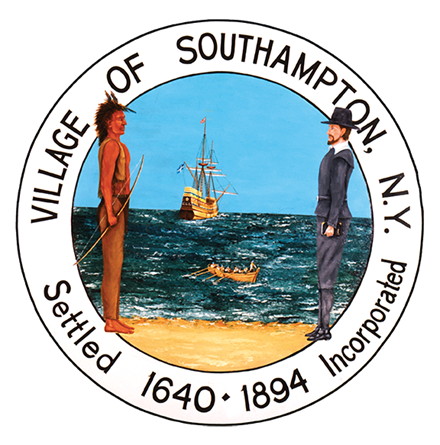Conscience Point Historic Site and Nature Walk commemorates one of the most consequential events in our shared past: the landing of the first English settlers in New York State in 1640 and the unimaginable changes that followed their arrival. The site also commemorates the stories and contributions of those who first encountered these settlers, the Shinnecock people, whose ancestors had lived here for thousands of years before the landing. We all must strive to fully understand this history and its enduring legacies, from the perspectives of both the settlers who sought to claim the land, and the Native Americans from whom it was taken. As with all artifacts in our collection, the land at Conscience Point brings history to life and enhances understanding of our shared past.
Dubbed “the Plymouth Rock of Southampton” by renowned local historian William S. Pelletreau (1840–1918), the Southampton History Museum has owned and protected the Conscience Point Historic Site and Nature Walk since 1910. Encompassing about 4.5 acres of spectacular waterfront, Conscience Point is a hook-shaped peninsula in the center of North Sea Harbor. The site is regarded as the place where Southampton’s first English settlers landed on June 12, 1640, an event celebrated as Founder’s Day, or the anniversary of the founding of Southampton.
Most recently, the museum hosted the 375th anniversary of the landing at Conscience Point in partnership with Southampton Town and the Shinnecock Nation on June 13, 2015. Festivities included a recreation of Shinnecock life before the arrival of European settlers in 1640, narrated by Shinnecock elder Elizabeth "Chee Chee Thunderbird" Haile (1930–2015). The Southampton History Museum looks forward to commemorating the 400th anniversary of this momentous event at the Conscience Point Historic Site and Nature Walk with our partners and community in 2040!

The Conscience Point Historic Site is prominently featured on the official seals of the Village and Town of Southampton (shown above). The Southampton History Museum nominated the site as a Town Landmark in 2001, and it was designated by the Town Board in 2003. The nomination form explains that the Museum had recently rehabilitated the area by replacing an asphalt roadway to the point with a crushed-shell pedestrian path, which remains at the site today, noting:
"The property was landscaped with native materials and plants more nearly reflective of its original character...pristine in appearance today [i.e. 2001], [it] is a reminder of the settlement of the town of Southampton and the importance of North Sea Harbor to the development of the town. Looking west from the [Conscience Point Historic Site & Nature Walk] across the harbor to [the Conscience Point National Wildlife Refuge] a viewer gets a sense of the original character of the harbor."
Since becoming the owners and stewards of the Conscience Point Historic Site in 1910, the Southampton History Museum has protected it as a vital reminder of the contributions of the North Sea community to the wider development of the town and village. Indeed, the founding trustees of the Southampton History Museum valued Conscience Point so highly that they decided to incorporate as a nonprofit organization in 1910 to purchase the property from Charles W. Reeves (1846–1923), a former Southampton Town Trustee whose family owned the land for generations (learn more about this momentous decision in articles published by The Southampton Press in 1910).
In many ways, Conscience Point is not only a "first step" for the founding of Southampton but also for the founding of the Southampton History Museum. Today, the Southampton History Museum continues the work begun by our organization’s founders to preserve and protect Conscience Point for generations to come.

Conscience Point's role in local history and culture is reflected in its name. The earliest known written evidence of a place called Conscience Point appears in a Southampton Town deed dated June 23, 1731. This deed was identified by William S. Pelletreau, who initiated efforts to transcribe and publish local historic records during his tenure as Southampton Town Clerk. The deed was published in 1878 in the fourth volume of historic Southampton Town records with a notation by Pelletreau that reads:
“Conscience Point is on the west side of North Sea Creek, and little north of Mr. Jeremiah Reeves’ landing. If the old story is true, this may be called the Plymouth Rock of Southampton. Tradition states that the first settlers landed on this point, and that one of the women, as she stepped on shore, exclaimed, 'For conscience sake, I'm on dry land once more!' This [folklore] tradition...is of considerable antiquity to our knowledge, hence the name Conscience Point.”
Like Plymouth Rock, we do not know of any 17th-century records that link Conscience Point with the actual landing of Puritan settlers. Nevertheless, the 1731 deed shows that people living in Southampton called this place Conscience Point. The name also strongly suggests an association with old stories told by generations of Southampton residents about a Puritan woman who landed on the shore of North Sea Harbor so long ago. Most interestingly, the 1731 deed that mentions Conscience Point predates the earliest known record of Plymouth Rock by a decade! So perhaps Plymouth Rock may be called “the Conscience Point of Plymouth”?
You can read more about the fascinating story of Conscience Point in North Sea: The First Step (2007) by Mary Cummings, the Southampton History Museum's archivist and Archives and Research Center manager.
.png)



